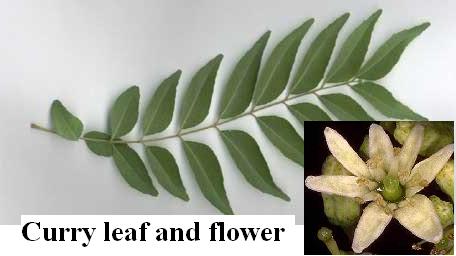From this website (
http://www.coosemansdenver.com/catalog/product.asp?product_id=1248 ) ( may be very slow to load) we discover they're ......
Not a stock item, but available sporadically all year from Asia, India, and the USA. Also known as kari, limbdi and limbdo, these leaves are enjoyed for their bitter flavor and strong scent. Widely used in India, often times the entire stalk and leaves are added to a dish during the initial stages of preparation. Its flavor is robust and unmistakable: so youd better like it! Young, tender, leaves may be chopped finely and added egg and vegetable creations. Best stored in a paper bag and kept between 45-50 degrees F. Best used within two weeks of receipt.They look like this:

From the book
Cooking Ingredients by Christine Ingram, page 418-19:
Curry LeavesThese come from a tropical tree of the citrus-rue family, which is native to southern India and Sri Lanka. The long, slender leaflets are shiny, dark green on the top with paler undersides. Curry leaves have a strong, warm, spicy aroma when they are bruised or rubbed. They impart a curry flavor that cannot be replicated by any other ingredient.
A classic way of using curry leaves is by frying mustard seeds in hot ghee, then adding a little asafoetida and several curry leaves and cooking them just a few seconds before stirring them into a plain dhal-based Indian soup. Curry leaves may be added whole to curries, in which they should be removed before the dish is served. Alternatively, the leaves can be very finely chopped or minced (ground).